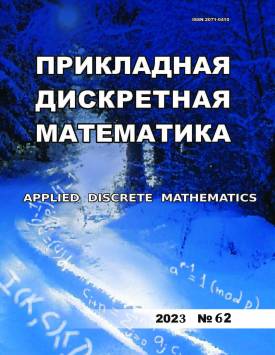The actual awareness of users in confidential information is considered as the possession of relevant information, characterized by the degree of perception (assimilation) and the possibility of using information (“extraction” from memory). Within the subject-object class of access control models in computer systems, the concept of awareness is formalized as a result of user access to objects containing confidential information. Access to the object (by reading), having a time frame (duration), forms the user’s awareness of the confidential information of the corresponding object, the value of which is proportional to the volume of confidential information of the object, the index of complexity (readability) of the text of the object, the duration of access and and also depends on the user’s individual ability to perceive (reading speed) and master (understanding, processing) information. At the same time, the volume of confidential information of an object is defined as a value proportional to the number of words in the text and the coefficient of informativeness of the object. Over time, according to the Ebbinghaus forgetting curve, the user’s awareness of sensitive information decreases. The degree of decrease in awareness depends on the individual characteristics of the user and the level of confidentiality of the information. Subsequent accesses to the object can restore the degree of awareness depending on the duration of the accesses and the time elapsed since the previous access. The type and parameters of the function of reducing/restoring awareness over time and depending on the access history are considered. The user’s awareness of all confidential information contained (processed) in a computer system consists of awareness of all access objects, taking into account the synergetic effect, which can be either positive (knowledge about the system of objects is greater than the sum of knowledge about objects) or negative. The nature and features of users’ actual awareness in confidential information are illustrated by examples with various parameters of access objects, access history and individual characteristics of users.
Download file
Counter downloads: 6
- Title The model and metrics of awareness in confidential information. Part 2. Actual awareness
- Headline The model and metrics of awareness in confidential information. Part 2. Actual awareness
- Publesher
Tomsk State University
- Issue Prikladnaya Diskretnaya Matematika - Applied Discrete Mathematics 62
- Date:
- DOI 10.17223/20710410/62/5
Keywords
synergy effect in awareness, access history, information forgetting curve, duration of access, understanding of the access object text, complexity of the access object text, informativeness of the access object, awareness metrics, awareness model, actual awareness, awareness, confidential informationAuthors
References
Пегат А. Нечеткое моделирование и управление: пер. с англ. 2-е изд. М.: БИНОМ. Лаборатория знаний, 2013. 798 с.
Нечеткие множества в моделях управления и искусственного интеллекта / под ред. Д. А. Поспелова. М.: Наука, 1986. 312с.
Гайдамакин Н. А., Баранский, В. А. Алгебра мультирубрик на корневых деревьях иерархических тематических классификаторов // Сиб. электрон, матем. изв. 2017. Т. 14. С.1030-1040.
Гайдамакин Н. А. Многоуровневое тематико-иерархическое управление доступом (MLTHS-система) // Прикладная дискретная математика. 2018. №39. С. 42-57.
Гайдамакин Н. А. Модель тематического разграничения доступа к информации при иерархической структуре классификатора в автоматизированных системах управления // Автоматика и телемеханика. 2003. №3. С. 177-189.
Шардаков M. H. Усвоение и сохранение в обучении. Учёные записки Ленингр. гос. пед. ин-та им. А. И. Герцена. 1940. Т. 36. 195 с.
Буймов А. Г. Закономерности поведения кривых забывания // Доклады ТУСУРа. 2017. Т. 20. №4. С. 138-141.
Thalheimer W. How Much Do People Forget? http://www.work-learning.com/catalog. html. 2023.
Солнышкина С. И., Кисельников А. С. Сложность текста: этапы изучения в отечественном прикладном языкознании // Вестник Томского госуниверситета. Филология. 2015. №6(38). С. 86-99.
Чмыхова Е. В., Давыдов Д. Г., Лаврова Т. П. Экспериментальное исследование факторов скорости чтения // Психология обучения. 2014. №9. С. 26-36.
Астахова Л. В., Ульянов H. Л. Модель политики управления осведомленностью сотрудников организации в области информационной безопасности // Материалы 67-й науч. конф. ЮУрГУ, Челябинск, 14-17 апреля 2015 г. С. 678-682.
Грушко А. А., Примемко Е. А., Тимонина Е. Е. Теоретические основы компьютерной безопасности. М.: Академия, 2009. 272 с.
Building an Information Technology Security Awareness and Training Program. NIST Special Publication 800-50, 2003.
ГОСТ Р ПРО МЭК 27002. Информационная технология. Методы и средства обеспечения безопасности. Свод норм и правил менеджмента информационной безопасности. М.: Стандартинформ, 2021. 74 с.
Wickelgren W. A. Single-trace fragility theory of memory dynamics // Memory Cognition. 1974. V.2(4). P.775-780.
http://www.ideationizing.com/2009/06/brief-history-of-mathematical.html- A Brief History of the Mathematical Definition of Forgetting Curves. 2023.
Ефимов A. H. Информация: ценность, старение, рассеяние. М.: Знание, 1978. 64 с.
ГОСТ Р 53894-2016. Менеджмент знаний. Термины и определения. М.: Стандартинформ, 2020. 24с.
Wickelgren W. A. Trace resistance and the decay of longterm memory //j. Math. Psychology. 1972. No.9. P.418-455.
Ланге В. Г. О скорости забывания // Вопросы психологии. 1983. №4. С. 142-145.
Хрестоматия по общей психологии. Психология памяти / под ред. Ю.Б. Гиппенрейтер, В. Я. Романова. М.: Изд-во МГУ, 1979. 272 с.
Аткинсон Р. Человеческая память и процесс обучения. М.: Прогресс, 1980. 527 с.
Зинченко Т. П. Память в экспериментальной и когнитивной психологии. СПб.: Питер, 2002. 320 с.
Chalmers D. The Conscious Mind: In Search of a Fundamental Theory. Oxford: Oxford University Press,1996. 225 p.
Шютц А. Смысловая структура повседневного мира: очерки по феноменологической социологии. М.: Институт Фонда "Общественное мнение", 2003. 336 с.
Lee S. J. and Reeves Т. С. Edgar Dale: A significant contributor to the field of educational technology // Educational Technology. 2007. V.47. No.6. P.56-59.
Гайдамакин Н. А. Разграничение доступа к информации в компьютерных системах. Екатеринбург: Изд-во Урал, ун-та, 2003. 328 с.
Деѳянин П. Н. Модели безопасности компьютерных систем. Управление доступом и информационными потоками. М.: Горячая линия - Телеком, 2020. 352 с.
Гайдамакин Н. А. Модель и метрики осведомленности в конфиденциальной информации. Часть 1. Потенциальная осведомленность // Прикладная дискретная математика. 2023. №61. С. 86-103.

The model and metrics of awareness in confidential information. Part 2. Actual awareness | Prikladnaya Diskretnaya Matematika - Applied Discrete Mathematics. 2023. № 62. DOI: 10.17223/20710410/62/5
Download full-text version
Counter downloads: 90